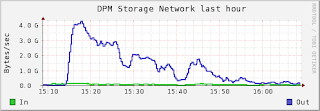In my last post, we investigating deployments of IPv6 on the test Cluster, the 1st one of which was using SLAAC to assign addressing to hosts. Interestingly enough it worked, first time out the tin.
An IPv6 Traceroute from the web is shown below:
traceroute to 2001:630:40:ef0:230:48ff:fe5a:4b7 (2001:630:40:ef0:230:48ff:fe5a:4b7), 30 hops max, 40 byte packets
1 2001:1af8:4200:b000::1 (2001:1af8:4200:b000::1) 1.600 ms 1.813 ms 1.882 ms
2 2001:1af8:4100::5 (2001:1af8:4100::5) 1.320 ms 1.392 ms 1.465 ms
3 be11.crs.evo.leaseweb.net (2001:1af8::9) 2.587 ms 2.631 ms 2.619 ms
4 linx-gw1.ja.net (2001:7f8:4::312:1) 8.475 ms 8.466 ms 8.453 ms
5 ae1.lond-sbr4.ja.net (2001:630:0:10::151) 78.338 ms 78.388 ms 78.376 ms
6 2001:630:0:10::109 (2001:630:0:10::109) 9.900 ms 9.479 ms 9.446 ms
7 so-5-0-0.warr-sbr1.ja.net (2001:630:0:10::36) 13.320 ms 13.196 ms 13.317 ms
8 2001:630:0:10::296 (2001:630:0:10::296) 18.705 ms 18.542 ms 18.793 ms
9 clydenet.glas-sbr1.ja.net (2001:630:0:8044::206) 18.947 ms 18.931 ms 18.948 ms
10 2001:630:42:0:3e::9a (2001:630:42:0:3e::9a) 19.434 ms !X 18.214 ms !X 17.682 ms !X
The next phase of testing will be to enable a webserver to speak in both IPv4 and IPv6 using this access mechanism and then onto a Grid services .
I will post up a more detailed explanation of the mechanisms used for this soon.








